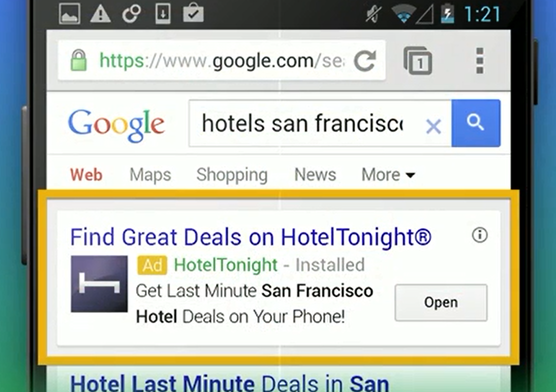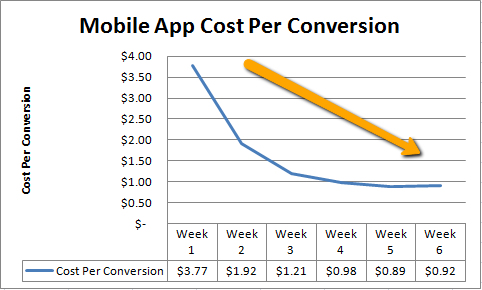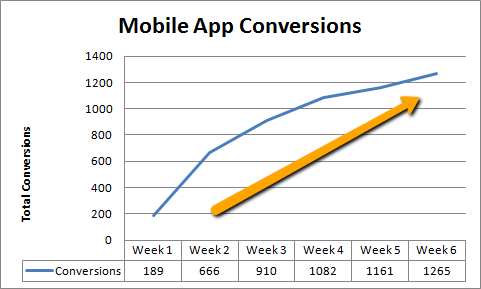Mobile app advertising in AdWords is getting more sophisticated by the day. Recently, Google announced several additional features to help those marketing apps.
With AdWords, you can promote your app on a pay per click ad basis to very targeted audiences. Apps for Android apps will only appear on Android devices and iTunes apps will only show on devices with iOS. If someone is searching Google on their phone for a recipe, for instance, you can have an ad for your recipe app right there ready for download. If your app might be relevant to a local audience, you can set geotargets to focus ads for those, for example, just in the Orange County, Calif.,  area. The more relevant and targeted you can get, the better the results.
area. The more relevant and targeted you can get, the better the results.
Now, Google is allowing for even deeper, better ad targeting. For example, if you are someone who frequently exercises and use an app that measures how far you run, you might see an ad for an app that measures food calories. Advertisers can now take advantage of different pools of relevant traffic beyond just search results.
Google also announced that apps can be downloaded right from its TrueView YouTube Ads. These are great audiences to pull new users to your apps. For your existing app users, there are also options you can use to increase ROI.
According to Digital Trends, it’s estimated that 80 percent of apps go unused after the first time they are downloaded. To improve this, Google remarketing campaigns can be used to drive greater engagement from your existing users. You can direct ads to specific pages of your app with deep linking ads. This can help increase usage and revenue from your existing customer base by staying in front of that audience even when they aren’t using the app.
It’s all about improving your ROI and responding to the growing mobile usage. Many of the same techniques that are used in typical PPC advertising apply here. It’s a matter of making it work.
Sample Case Study:
This was a successful consumer app client that Zero Company took on recently. They were looking to drive down their cost per lead and increase their app downloads. 
We took this advertiser’s initial cost per download and dropped it from $3.77 to $0.92 and even lower in just under a few weeks. At the same time total conversions grew from 189 in the first week to 1,265 per week by the sixth week.
One of the great things about AdWords app data is that you get success/failure data pretty rapidly. If your keywords and ad copy are relevant, it’s often not a hard sell when an ad can go from click to installation in the blink of an eye.
Not all apps are the same, of course. Some have  higher prices, some are free with the hope of up-selling additional features or advertising, etc.
higher prices, some are free with the hope of up-selling additional features or advertising, etc.
What’s a profitable number for one app might be in the red for another. So the first place to start is understanding your revenue per download and determining your target ROI.
Once you have a decent grasp on the lifetime value of a user, AdWords becomes a numbers game. For apps, its an extremely measurable environment. Experienced PPC marketers can slice and segment that data in a variety of ways to fine-tune campaigns.







